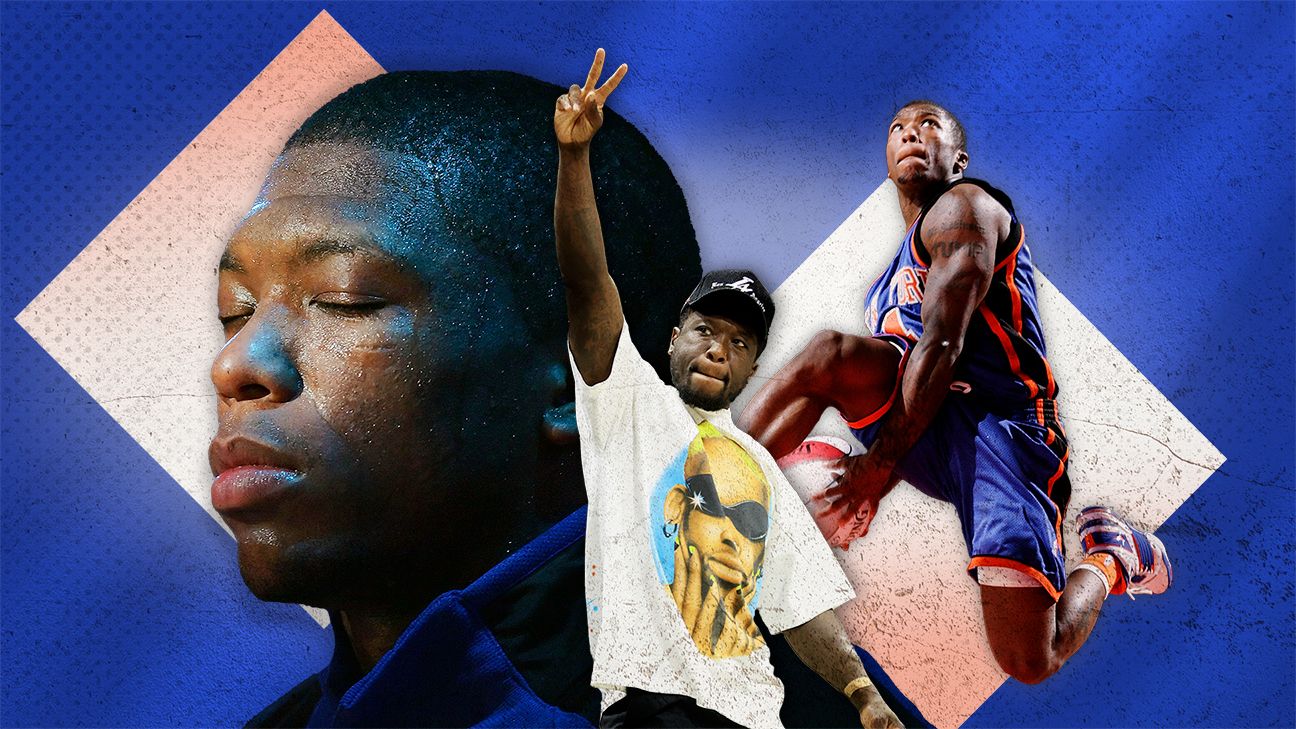Inside three-time NBA dunk champion Nate Robinson's silent battle -- and the fight for his life

🌈 Abstract
The article tells the story of former NBA player Nate Robinson's battle with kidney failure and his journey to find a kidney donor. It highlights the challenges he faced in navigating the healthcare system and the importance of raising awareness about kidney disease, especially among the Black community.
🙋 Q&A
[01] Nate Robinson's Kidney Condition
1. What was the initial diagnosis of Nate Robinson's kidney condition?
- During a routine physical with the Knicks' team doctor in 2005, it was discovered that Nate Robinson had high blood pressure, which was common among the Black population. The doctors told him his kidneys were not functioning properly and that he would eventually need a kidney transplant.
2. How did Robinson's kidney condition progress over the years?
- Robinson's kidney condition was closely monitored by the Knicks' team doctor, Dr. Callahan. Over the years, he would occasionally become violently ill and need to visit the hospital, but he only missed a total of two games due to his condition.
- By 2021, Robinson's kidneys had failed, and he had to start dialysis treatments three times a week.
3. How did Robinson's kidney failure impact his mental health?
- After starting dialysis, Robinson fell into a deep depression. He spent long hours alone in a "man cave" on the second floor of his home, feeling like he was "dying from the inside out."
- Robinson was also paralyzed by the prognosis and felt ashamed to ask friends and family for a kidney donation.
[02] Navigating the Healthcare System
1. What challenges did Robinson face in trying to get a kidney transplant?
- Robinson was surprised to learn that the process for getting a kidney transplant was much more complicated than he had initially thought. He had to go through extensive tests and screenings, and a committee had to determine if he was "healthy and deserving" of a kidney.
- Robinson also struggled to understand the process and had many unanswered questions, feeling caught up in the "byzantine maze of the American health care system."
2. How did Tiffany Jones-Smith, the CEO of the Texas Kidney Foundation, help Robinson?
- Jones-Smith reached out to Robinson after learning about his situation and helped connect him with experts and specialists. She explained the National Kidney Registry and the paired kidney exchange program, which could be a faster route to a transplant.
- Jones-Smith did not blame Robinson for being unaware of the process, recognizing that "a lot of times, people don't know because they don't know."
[03] Raising Awareness and Finding a Donor
1. How did Robinson's friends and family try to help him find a donor?
- Robinson's friends, including Tank Johnson and Jamal Crawford, pleaded with him to go public with his story to raise awareness and find a potential donor. However, Robinson was initially reluctant to do so, feeling ashamed and guilty about asking someone for a kidney.
- Eventually, with the help of his friends, Robinson did go public, and the University of Washington received thousands of offers from people willing to donate a kidney.
2. What is the current status of Robinson's search for a kidney donor?
- Robinson believes there is a potential donor among the thousands of offers received, and he is focused on staying healthy to prepare for the transplant.
- He is still not on a donor waiting list due to issues with his blood pressure, but he hopes to receive a new kidney within the next 6-12 months.